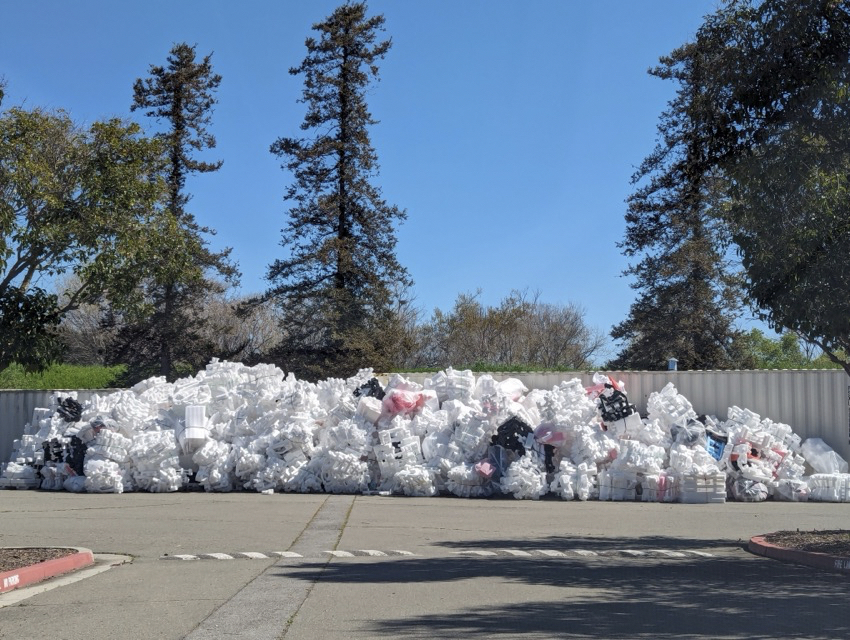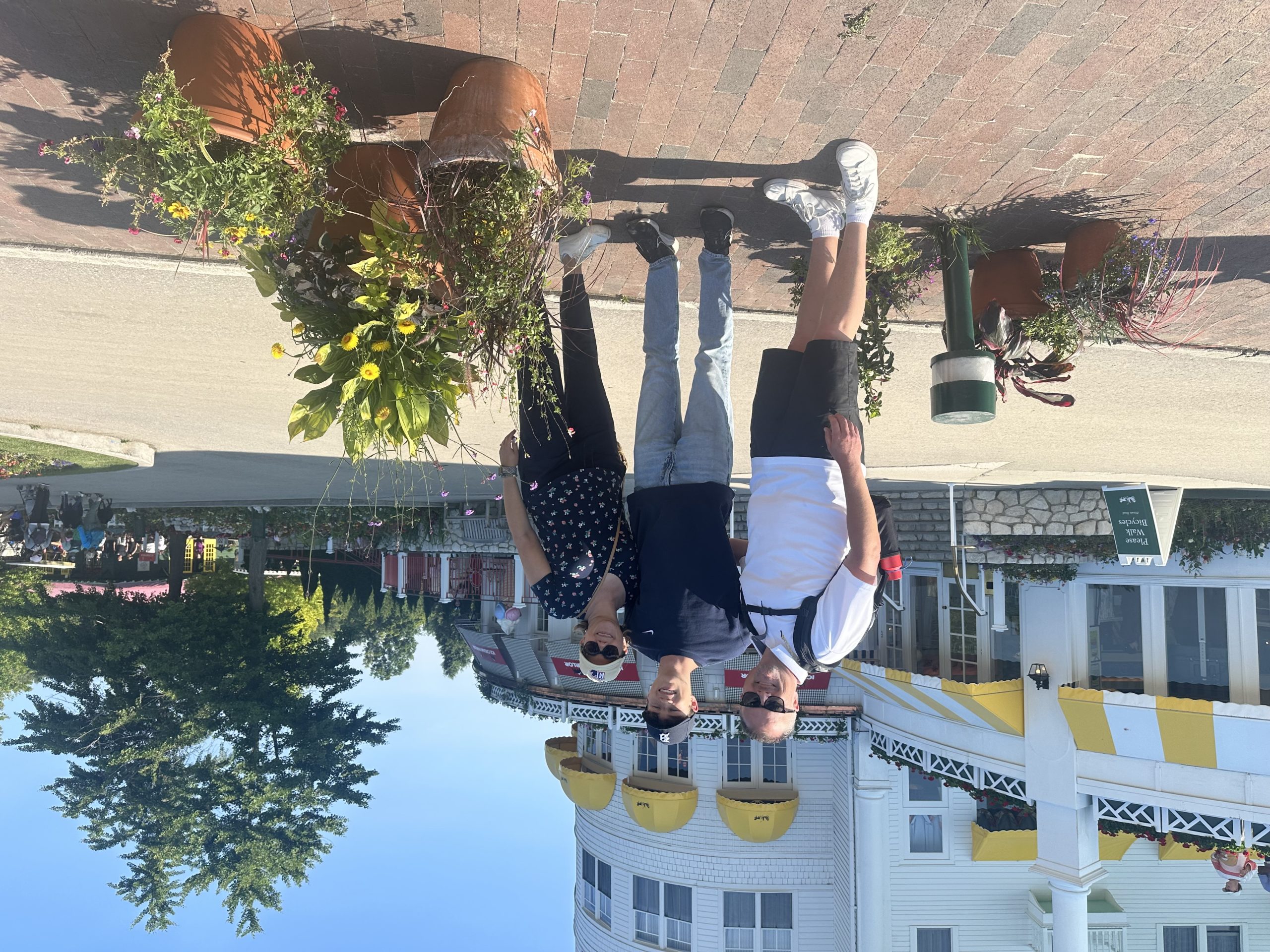This weblog is a part of our give attention to Cisco staff who’re “Striving for Sustainability” by discovering alternatives to combine sustainability of their day-to-day work.
At Cisco, we’re designing our merchandise and packaging with circularity in thoughts, aligning them to our Round Design Rules. Round design means designing merchandise and methods that allow reuse, reduce environmental impacts, drive innovation, and notice worth for our stakeholders.
That’s the place Tom Jackson is available in. Tom is the Senior Director of Provide Chain, Computing Programs, & Product Packaging, and Govt Sponsor of Round Design at Cisco. His ardour for sustainability is rooted in a lifelong love of the outside and formed by visits to just about 45 U.S. nationwide parks. Study extra about how this has led to a profession in advancing round design:
How have your earlier roles influenced your curiosity and involvement in round design?
Tom: I believe my earlier roles actually ready me for this by giving me an outsider’s perspective. I’ve had round eleven completely different careers right here at Cisco over my 25 years. I began early on in take a look at improvement engineering, then moved into broadband cable routing, mounted microwave wi-fi methods, and later labored as a program supervisor. So I’ve had expertise throughout an enormous number of companies and working fashions.
I introduced deep expertise in taking merchandise from ideation to mass manufacturing, which proved precious in sustainability as a result of I understood how issues get finished at Cisco. Our sustainability specialists taught me the rules and priorities, and my function was to systematically embed round design into Cisco’s product improvement course of, utilizing my community to construct the preliminary workforce and launch round design. Altering 30 years of “how we’ve all the time finished it” was no small feat, however we made progress — and this work won’t ever really finish, as we’ll all the time be on the lookout for what’s subsequent.
Why is round design vital at Cisco?
Tom: What’s completely different about Cisco’s strategy to round design is that we’ve constructed an entire system. We’ve a course of, guiding rules, coaching, a scoring methodology — and, most significantly, full buy-in from the design, new product introduction (NPI), and provide chain communities. It’s really embedded into our enterprise and is now simply a part of how we launch each product.
This isn’t one thing we need to hold to ourselves. We’re all on the identical planet, and progress on circularity solely issues if everybody strikes ahead collectively. That’s why we’re clear about our strategy, overtly sharing particulars about the place we’re headed subsequent.


To me personally, I believe all of us have that intrinsic drive — once we see the misuse of supplies, or merchandise not being made with recycled or recyclable supplies. I like the film Wall-E, and I don’t need my children or grandkids to finish up dwelling on Wall-E’s trash planet. However actually, that’s the path the world was heading with its outdated linear cycle of “design, make, dispose.”
There have been additionally some actual “aha” moments. For instance, we have been doing a Cisco constructing refresh, which included updating the networking tools in one of many labs. The quantity of packaging waste that got here from putting in lots of of Cisco merchandise in a single day was eye-opening. That was an actual catalyst for me — eager about the 1000’s of shoppers who expertise this as properly.
One other huge catalyst has been the way in which the market and our buyer base are evolving. Model worth is usually tied to sustainability now — being seen as a round firm actually issues. Once we’re responding to a request for citation (RFQ) and may present we’re extra sustainable than our opponents, that may be an actual differentiator. In locations like Europe, it’s turning into desk stakes for patrons and a spotlight of policymakers to emphasise recycled IT merchandise and recycled materials origins. So, it’s simply good enterprise, for my part.
How have engineers at Cisco responded to this kind of initiative?
Tom: We’ve actually altered our DNA — we’re completely different now in how we design issues. Once we first began this journey, there was an enormous quantity of reluctance and skepticism.
Coaching was key to overcoming that reluctance. We didn’t need it to be simply one other obligatory coaching. We knew it needed to be interactive and fascinating, one thing that will actually draw folks in and assist them perceive the rules. I liked choose-your-own-adventure books as a child, so we modeled the coaching after them. Your selections reveal downstream results, serving to designers see how their choices — like together with each potential accent — can create waste.
Then we launched a scoring methodology, so each new product and packaging at Cisco could possibly be scored in opposition to these rules. A product wants at the very least 75 factors to be launched. That basically gamified the method. Our engineers and designers are aggressive folks, so it sparked this power. We even added an innovation part the place you can earn bonus factors for arising with new round design concepts.
The design neighborhood’s creativity has been extraordinary — from making equipment opt-in to scale back waste, to eliminating paint and single-use plastic, utilizing recycled supplies, and rethinking packaging. We’ve seen huge strides in energy administration, modularity, and product longevity. As soon as Cisco’s design engineers and designers understood the rules and what was at stake, they took off, delivering progressive concepts that exceeded our expectations. All credit score goes to them — they’ve really made it occur.
What’s the most rewarding facet about working in round design?


Tom: Moreover the superb work from Cisco’s folks, it’s about seeing the tangible outcomes. It’s one factor to attain your merchandise and have the information, however it’s one other to take a look at the downstream influence these efforts are having. We proceed to work on decreasing plastics in our merchandise. We used to incorporate foam with many merchandise’ packaging, however we’ve made good progress on our aim to scale back foam in product packaging by 75% (by weight) by FY25. We’ve additionally seen a 90%+ discount in single-use plastic baggage on equipment in addition to modified default accent choices based mostly on buyer suggestions, eliminating a ton of pointless waste.
There are actual bottom-line advantages, too. Eliminating waste, pointless equipment, and beauty options has saved prices whereas enhancing sustainability. For instance, eliminating oil-based moist paint from merchandise not solely diminished risky natural compounds (VOCs) but additionally minimize out additional logistics, labor, and waste. Most of our merchandise stay in racks in information facilities — nobody sees them — so there’s no want for pointless paint or ornamental options.
Total, it’s been an evolution. 5 years in the past, plenty of these objectives felt daunting. We didn’t understand how we’d transfer away from sure packaging, however with trial and error, we figured it out. And we’re seeing the business observe. Once we began, we needed to create our personal recycled plastic provide, however now there are many distributors. Now the business is transferring on this path and we’re proud to be main the cost.
Learn extra about Cisco’s Round Transformation on our Objective Reporting Hub.